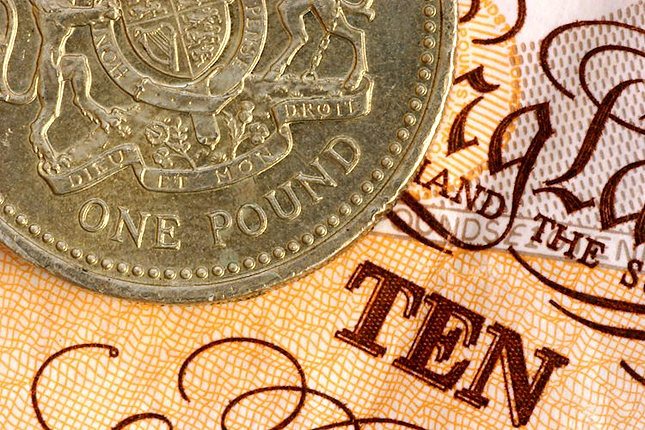With a recent string of surprisingly hotter-than-expected economic readings coming after two successive downshifts in interest-rate increases – an interesting debate is raging as to what the Federal Reserve should do next: Go back to super-sized rate hikes or stick with the smaller, quarter-point increases, but keep rates higher for longer.
While there is no denying that the Fed’s battle against inflation was never going to be easy – policy makers only have themselves to blame for making the situation even more complicated by falling behind the curve on inflation for the third time in two years.
In 2021, the Federal Reserve got way behind the curve in tightening monetary policy – playing down the biggest year-on-year rise in prices as “transitory”. The result was a surge in inflation to levels not seen in more than four decades.
In a “belated response” to the record spike in inflation, the Federal Reserve embarked on their most aggressive hiking cycle since the 1980s – raising interest rates eight times in a row since March 2022 – by a total of 450 basis points to date.
And then, fast forward to the Fed’s first monetary policy meeting of 2023 on February 1 – policy makers made their biggest misjudgement of all, prematurely declaring victory on inflation too soon and labelling 2023 as the “Year of Disinflation”. This may end up being remembered as the worst inflation call in the history of the Federal Reserve.
Historically, the Federal Reserve has never been right on inflation and has a proven track record of getting it 'wrong', time and time again – just as we are witnessing today!
According to leading economists, the Federal Reserve’s quantitative tightening cycles “almost definitely end up breaking in the financial system”.
In 2012–2013, when the Fed sent mixed messages to the markets on their monetary tightening campaign known as the “Taper Tantrum” – that led to traders dumping emerging market assets and currencies and piling into safe havens such as Gold, which was one of the best-performing periods for the precious metal.
Then between 2018–2019, when the Fed began “aggressively” tapering its balance sheet – that led to the “Repo Market Meltdown” – And I'm sure you can guess what happened to precious metal prices.
What will the Fed break this time around?
Only time will tell, however with the Federal Reserve taking a data-dependent approach on rate hikes, traders are now carefully watching every economic release for clues on the markets next big move.
The size of the Fed's next rate hike this month will ultimately be determined by the U.S jobs report on Friday and the central bank’s favourite measure of inflation – Consumer Price Index data for February, due for release next week.
Right now, Gold remains a traders' market packed with endless opportunities to capitalize on the short-term macro-driven price action – And that's the most optimal strategy right now
Where are prices heading next? Watch The Commodity Report now, for my latest price forecasts and predictions:
Trading has large potential rewards, but also large potential risk and may not be suitable for all investors. The value of your investments and income may go down as well as up. You should not speculate with capital that you cannot afford to lose. Ensure you fully understand the risks and seek independent advice if necessary.
Recommended Content
Editors’ Picks

US PCE inflation data to ramp up volatility ahead of Thanksgiving – LIVE
The Personal Consumption Expenditures (PCE) Price Index, the Fed's preferred gauge of inflation, data for October will be scrutinized by markets ahead of the Thanksgiving Day holiday. Investors remain undecided about the possibility of one more Fed rate cut in December.

EUR/USD extends recovery beyond 1.0550 on renewed USD weakness
EUR/USD preserves its bullish momentum and trades above 1.0550 in the American session on Wednesday. The US Dollar (USD) struggles to find demand following the mixed macroeconomic data releases from the US, helping the pair push higher ahead of US PCE inflation data.

GBP/USD advances toward 1.2650, US PCE data eyed
GBP/USD extends the bullish momentum to trade near 1.2650 in the second half of the day on Wednesday. The pair benefits from a sustained US Dollar weakness ahead of the Thanksgiving Day holiday. Investors await PCE Price Index figures for October.

Gold climbs to $2,650 area as US yields push lower
Gold builds on Tuesday's gains and trades at around $2,650 in the American session. The benchmark 10-year US Treasury bond yield is down more than 1% on the day below 4.3%, helping XAU/USD continue to push higher.

Eurozone PMI sounds the alarm about growth once more
The composite PMI dropped from 50 to 48.1, once more stressing growth concerns for the eurozone. Hard data has actually come in better than expected recently – so ahead of the December meeting, the ECB has to figure out whether this is the PMI crying wolf or whether it should take this signal seriously. We think it’s the latter.

Best Forex Brokers with Low Spreads
VERIFIED Low spreads are crucial for reducing trading costs. Explore top Forex brokers offering competitive spreads and high leverage. Compare options for EUR/USD, GBP/USD, USD/JPY, and Gold.